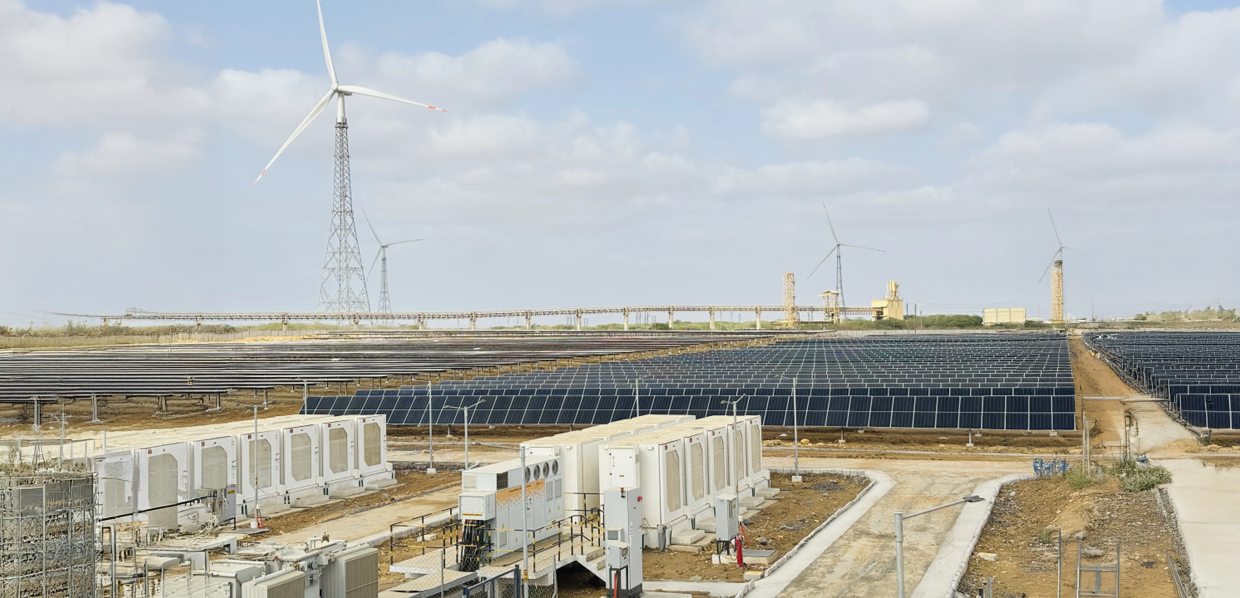RENEWABLE energy sits at the heart of Gentari’s mission, becoming the driving force of the Asia Pacific’s energy transition since September 2022.
In just three years, it has advanced Malaysia’s clean energy ambitions – delivering tangible outcomes across renewables, hydrogen and green mobility as it demonstrates our nation’s capabilities on the international stage.
Strengthening Asia Pacific’s energy security through renewables
As of June 30, Gentari has achieved a cumulative installed and under-construction capacity of 8.4 gigawatts (GW) globally, supporting national energy roadmaps and regional integration.
In Malaysia, initiatives align with the National Energy Transition Roadmap, targeting 70% renewable capacity by 2050.
A partnership with Gamuda Energy will deliver 1.5 GW of solar with storage under the Corporate Renewable Energy Supply Scheme (CRESS), helping meet rising data centre demands, strengthening the digital economy and advancing net-zero goals.
At the regional level, Project VMS (Vietnam–Malaysia–Singapore), led by MY Energy Consortium (PETRONAS and Tenaga Nasional Berhad) with Singapore’s Sembcorp Utilities and Vietnam’s PetroVietnam Technical Services Corporation, represents a major step toward the Asean Power Grid.
The initiative positions Malaysia as both collaborator and conduit for clean energy.
In India, Gentari has become a leading renewables provider, delivering 7.0 GW of capacity to commercial and utility-scale customers, contributing to the National Solar Mission’s target of 280 GW by 2030.
A collaboration with UltraTech Cement (UTCL), India’s largest cement manufacturer, includes the country’s first on-site hybrid round-the-clock renewable system at its Sewagram plant, combining solar, wind and storage.
Across more than 40 project sites, the partnership has reduced costs and improved uptime, showing how competitiveness and climate ambition can align.
In Australia, the Maryvale Solar and Energy Storage Project exemplifies the grid of the future.
With 243 megawatt-peak (MWp) of solar installation paired with a 172 MW/409 megawatt-hours (MWh) battery energy storage system, the project, once operational, will deliver up to 172 MW of dispatchable clean electricity.
The project also strengthens New South Wales’ renewable energy zone framework and supports Australia’s national target of 82% renewable electricity by 2030.
Laying the foundations for a future fuel
While solar, wind and storage will drive near-term decarbonisation, hydrogen is emerging as the fuel of the future, and Gentari is committed to position the Asia Pacific at the forefront.
In Malaysia, the company is working with the Sarawak state government to harness hydropower for low-carbon hydrogen, building one of the region’s first integrated value chains.
This enhances Malaysia’s energy security while supporting export ambitions to markets such as Japan and Korea.
A collaboration with MISC Berhad aims to deliver integrated shipping and floating solutions for clean ammonia by 2027, strengthening Malaysia’s role as a maritime and energy hub.
In India, Gentari has committed to five million tonnes per annum (MTPA) of green ammonia capacity by 2030, equivalent to about one MTPA of green hydrogen, nearly 20% of India’s target.
Anchoring this is the Kakinada project, one of the country’s first large-scale green ammonia facilities, powered by 650 MW of round-the-clock renewables from Gentari.
With the final investment decision (FID) achieved, it will serve domestic users and export markets, reinforcing India’s position as a potential global hydrogen hub.
As of June 2025, Gentari had advanced 175 kilotonnes per annum of hydrogen opportunities through collaborations and milestones across Asia and Europe, establishing a strong foundation for scalable adoption.
Accelerating the shift to sustainable transportation
Transportation contributes nearly one-fifth of global emissions, and Asia’s rapid urbanisation makes mobility a pressing challenge.
Gentari has expanded its role in advancing electric vehicle (EV) adoption through charging infrastructure and digital platforms.
In Malaysia, the company operates more than 570 charging points, including over 250 direct current (DC) fast chargers, making it the country’s largest licensed DC fast-charging operator along highways.
Beyond Malaysia, its regional roaming network now connects drivers to over 5,000 chargers across Malaysia, Thailand and India, enabling seamless cross-border EV travel.
Central to this ecosystem is Gentari Go, a digital platform integrating real-time charger availability, secure payments, rewards and roaming. It functions as a one-stop solution, helping to reduce range anxiety, simplifying EV ownership and driving adoption.
These initiatives support national EV agendas while laying the foundation for a more connected, sustainable mobility system.
From launchpad to scale
Gentari is now in a phase defined by scale and impact: delivering larger renewable projects to feed grids and corridors, moving hydrogen from pilot to commercial scale and expanding EV infrastructure to accelerate adoption.
Asia’s energy transition is uniquely complex, requiring a balance between energy security, affordability and sustainability.
In this context, business-led collaboration is essential. By pooling expertise, de-risking investments and delivering proof points, companies such as Gentari can support governments in charting viable, scalable pathways.
A call to action
Three years on, Gentari has marked significant milestones while remaining conscious of the responsibility ahead.
The energy transition is not a sprint but a relay, and actions taken in this decade will shape Asia’s energy trajectory for generations.
The company’s vision is to become Asia Pacific’s most valued clean energy solutions partner by 2030.
That value lies not only in gigawatts installed or charging points deployed, but also in the partnerships forged and the tangible contributions made toward national and regional goals.


